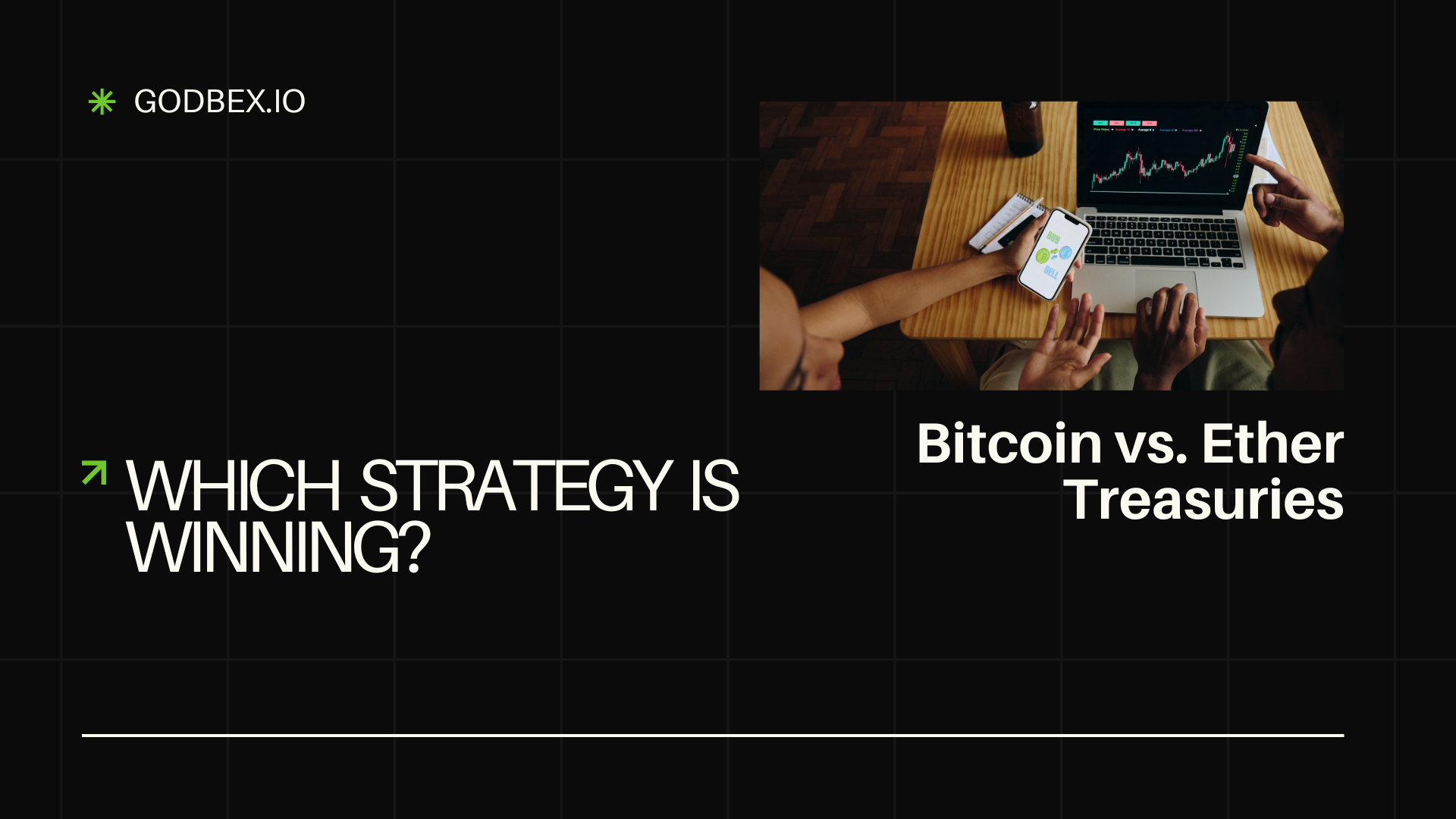
September 24, 2025
~5 min read
Bitcoin Treasuries — “Digital Gold on the Balance Sheet”
- Adoption & liquidity. Public companies and miners have embraced the “BTC-as-treasury” playbook since 2020. The poster child is MicroStrategy (now going by Strategy), which just disclosed ~639,835 BTC after another purchase—an order of magnitude larger than any single corporate ETH holder today. Aggregators of public filings corroborate the concentration of BTC in corporate coffers.
- ETF access. U.S. spot Bitcoin ETFs launched on Jan 11, 2024 with $4.6B of first-day trading—creating deep, regulated exposure and a new liquidity pipe for treasurers and boards. One year on, net inflows remained substantial, underscoring ongoing institutional demand.
- Accounting tailwind. The FASB now requires eligible crypto assets to be measured at fair value with changes in net income—effective for fiscal years beginning after Dec 15, 2024 (i.e., 2025), with early adoption allowed. That eliminates the old “impairment-only” drag and makes BTC (and ETH) easier to hold on balance sheets.
- Economic drivers. BTC has a fixed supply (21M cap) and a predictable halving cycle. There’s no protocol yield; returns come from price appreciation and the “digital gold” narrative amplified by ETF demand and corporate emulation effects.
Key risks.
- Concentration & reflexivity: “Bitcoin treasury companies” can trade at premiums/discounts to NAV, complicating M&A and capital markets math.
- Macro beta: BTC remains sensitive to liquidity cycles and risk sentiment; treasurers must size positions to survive volatility.
Ether Treasuries — “A Productive, Programmable Reserve”
- Adoption is catching up. Ether on corporate balance sheets is a 2025 story. CoinGecko now tracks ~12 institutions with ~3.78M ETH, and news flow shows a wave of firms disclosing ETH reserves as a strategic asset (often paired with staking). A looming example: “The Ether Machine” SPAC listing, slated to debut with >400k ETH on balance sheet, signals rapidly growing institutional interest.
- ETF access. U.S. spot ETH ETFs began trading July 23, 2024, providing regulated, exchange-listed exposure similar to BTC—and strengthening the case for board-approved ETH allocations.
- Economic drivers: yield + burn. Post-Merge, ETH can earn staking yield, and EIP-1559 burns base fees—two levers BTC doesn’t have. Burn and issuance are trackable on public dashboards and market data sites; the net supply effect depends on network activity (high activity → more burn). This supports the “productive reserve” thesis many ETH-treasury adopters cite.
Key risks.
- Operational/validator risk: Staking introduces slashing and custody/operational complexity—particularly if using third-party providers.
- Policy ambiguity: While ETH ETFs are live in the U.S., debates around staking, yield characterization, and platform regulation persist across jurisdictions.
Scorecard: Bitcoin vs Ether for Treasuries (2025)
- Adoption at scale: Advantage Bitcoin—dozens of public miners and multiple corporates with large, disclosed holdings (headlined by Strategy/MicroStrategy). ETH is growing fast but remains newer in treasuries.
- Market access: Both have U.S. spot ETFs (BTC since Jan 2024; ETH since July 2024), easing governance and custody hurdles.
- Accounting treatment: Tie—FASB’s fair-value update benefits BTC and ETH alike from FY 2025 onward.
Economic features:
- BTC: Scarcity + macro hedge narrative (simple, clean story).
- ETH: Staking yield + fee burn (a “productive” asset but with more moving parts).
Reputational/peer precedent: Advantage Bitcoin (longer corporate track record; massive ETF adoption). ETH momentum is building (emergent ETH-treasury firms and disclosures).
What the numbers say right now
- Corporate BTC concentration: Strategy/MicroStrategy alone controls ~639,835 BTC (per recent filing-based coverage), dwarfing any single corporate ETH reserve.
- ETH treasuries are scaling: Trackers and reporting show multi-hundred-thousand-ETH balance sheets emerging (e.g., Ether Machine; other firms disclosing six-figure ETH stakes), a notable shift from the near-zero baseline two years ago.
Why some CFOs prefer BTC (and others pick ETH)
Why BTC:
- Board familiarity: “Digital gold” is easier to message than a programmable asset with validator and client-diversity nuances.
- Liquidity & optics: The biggest ETFs by assets are still BTC, and peer comps (miners, corporates) are abundant.
Why ETH:
- Potential income: Staking can offset volatility with a recurring yield stream (direct or via institutional staking partners).
- Platform optionality: ETH underpins smart contracts, stablecoins, and DeFi—treasurers treating ETH as “working capital of the internet” like to match assets to future on-chain activity. Burn mechanics also align interests with network usage.
Risks (common and different)
- Common: price volatility; custody and key-management; disclosure/controls; concentration risk if allocations get large relative to cash.
- BTC-specific: Narrative and ETF flow dependence—if flows reverse, performance can stall; NAV premiums/discounts at “bitcoin treasury” equities can distort corporate finance.
- ETH-specific: Staking operations (slashing/operational risk), possible regulatory treatment of yield, and the fact that net supply can be inflationary or deflationary depending on activity—your “productive reserve” thesis hinges on real network use.
So, which strategy is winning?
Today, Bitcoin is still ahead in corporate adoption and market infrastructure (AUM, liquidity, peer comps). But Ether’s treasury story is accelerating thanks to ETF access, fair-value accounting, and the appeal of staking + fee burn economics. If 2024 was the year of BTC ETFs, 2025 looks like the year ETH treasuries became a credible, board-room conversation—especially for firms that expect to use blockchain rails rather than just hold an asset.